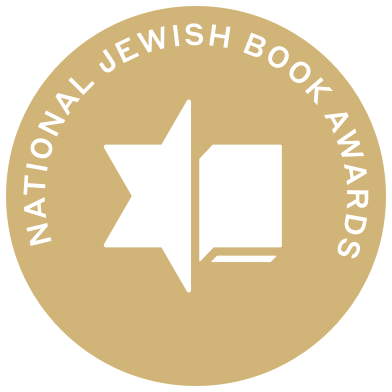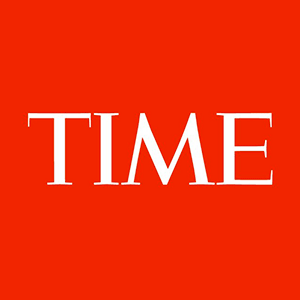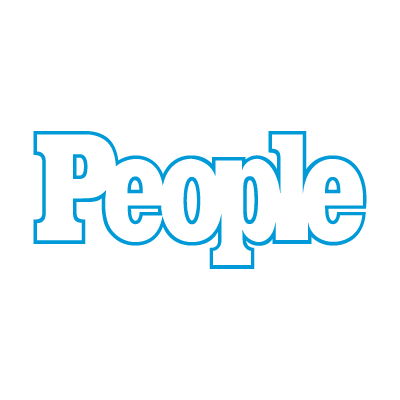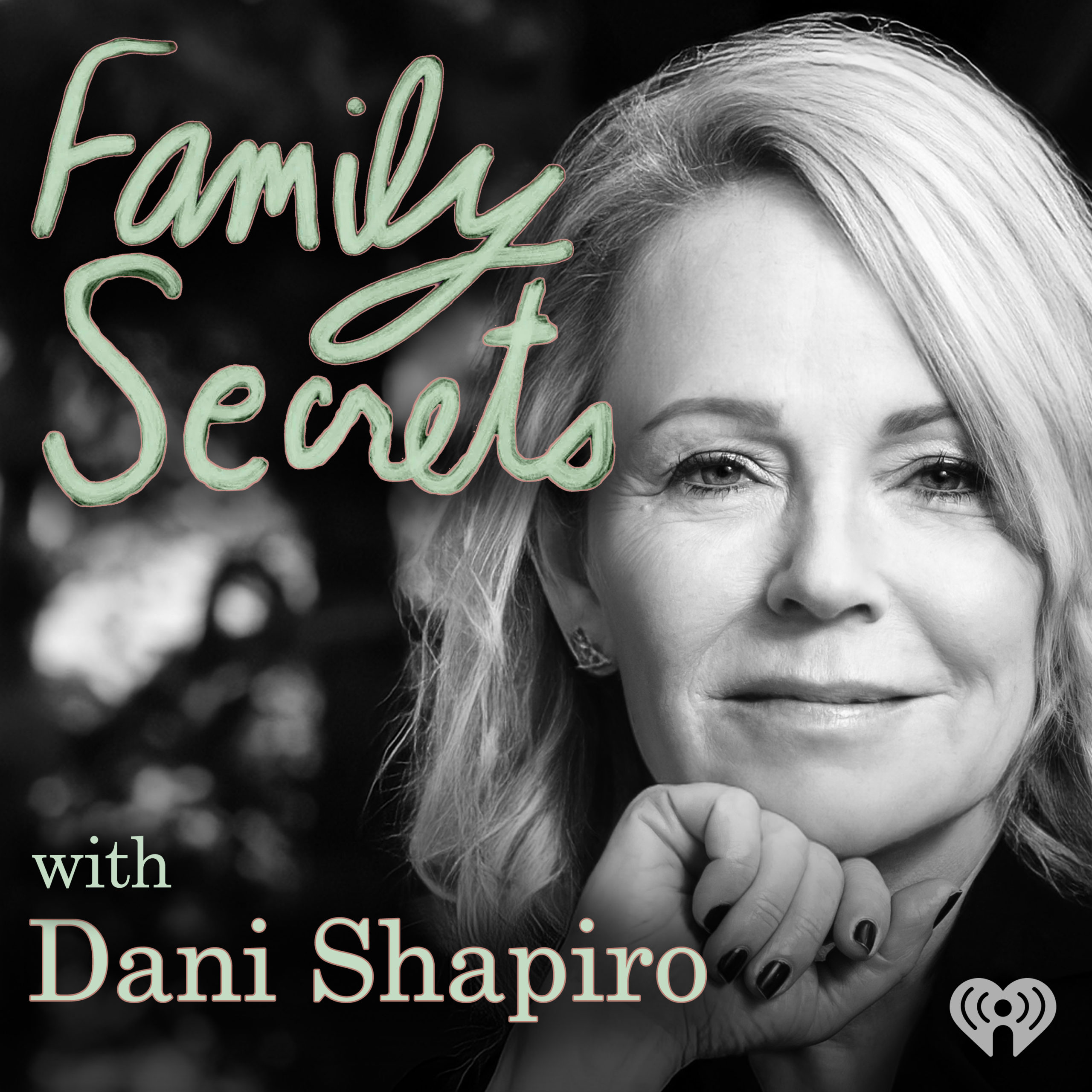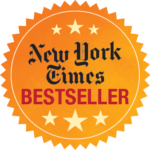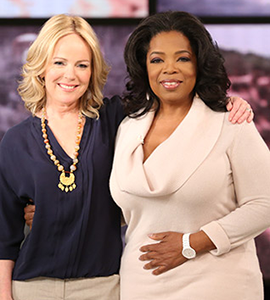There is No Me Without You
Dani Shapiro spared no effort or expense in her quest to find the perfect egg donor – one with her intellect, her looks, even her feelings. But then they met, and she realized that even the finest reproductions still aren’t the real thing.
The palm-filled lobby of Shutters on the Beach, an upscale hotel perched on the edge of the Pacific Ocean in Santa Monica, is a good spot for a blind date. With overstuffed chairs and sofas grouped around low coffee tables, and fireplaces blazing in the middle of a hot California afternoon, Shutters is a place where you can sit and talk, and no one will notice you or care. I’ve chosen a table near some drinking Europeans, with a clear view across the lobby to the front doors. I’m early, anxious. A Fred Segal shopping bag containing a gaily wrapped gift is at my feet. Only a few people in the world know I’m here. It feels as if I’m waiting to do something illicit-something involving sex or drugs. Which, in a way, I suppose I am.
A tall blond in a white pantsuit walks in, preceded by two chihuahuas straining on their leashes. Not her. A trio of young women in jeans and tailored jackets-Hollywood development girl types-scan the room for a table. Not her, not her, not her.
Finally — at exactly three-thirty, our appointed time — a slight woman in jeans, a pink T-shirt, and a blazer walks into the lobby. I recognize her instantly. She’s looking for me, too, though I have the advantage. She hasn’t seen my photograph. She has no idea what I look like, though she’d be correct in assuming that I am probably similar to her in build and coloring – an older version.
She notices me, and I give her a small half-wave. She approaches my table with what appears to be confidence, but who knows? I have a lot of information about her: where she goes to school (UCLA Law), her age when she lost her virginity (15), the causes of her grandparents’ deaths (lung cancer, heart disease). But now I’m suddenly aware that she is a perfect stranger.
“Carly?” I shake her hand, noticing everything. The size of her palm, the length of her fingers, the strength of her grip. “Dani?” she responds.
I’d wondered whether to give her my real name. We’re on a first name-only basis to begin with, but still my name is unusual. As a writer, I’m easily identifiable-traceable, if someone is so inclined.
She settles into a chair, orders a Diet Coke, then looks at me. I’m the one who asked for this meeting. I have a list of questions, scribbled on one of the back pages of my Filofax: How do you and your sisters get along? Who in your family do you most remind yourself of? Would you describe your parents as happy people? I’ve written them down because I’m afraid that I’ll forget to ask something important, something I’ll want to know down the line.
“So how did it go yesterday? Are you okay?”
She gives a little shrug. Her eyes are very blue, much bigger than in the photos. Beneath her left eye, a small muscle twitches. I wonder if she has a thyroid condition. Do they test for that?
“It was fine,” she says. “No big deal, really.”
The day before, a catheter was guided by ultrasound through Carly’s cervix, and eggs, 16 of them, were extracted from her follicles, made artificially mature by fertility hormones. These eggs were meant for me–I had purchased them. She was going to be the genetic mother of my child.
I was 43 when I reached the painful but inescapable conclusion that I wasn’t going to be able to give birth to another child. My husband and I had a six-year-old son and had been trying for several years to add to our family, despite the fact that I’d had a terrifying emergency cesarean the first time around and several doctors had urged us to use a surrogate rather than risk my health or a future baby’s. By the time we agreed to try IVF, the likelihood of success (referred to in the fertility world as the “take home baby rate”) for a woman my age using her own eggs was less than 5 percent.
We’re not going to do anything crazy, my husband and I kept reminding each other. We’re not desperate, we already have a wonderful kid. We thought about people we knew who had spent tens if not hundreds of thousands of dollars in an unsuccessful quest for a child. We knew couples whose marriages had been wrecked by the physical, emotional, and financial strain of multiple IVF cycles. But each insemination, each near-miss made us feel as if there was an empty chair at our table. We had considered adoption, but ultimately our desire for our son to have a biological connection to his sibling was simply too great. And so, we tentatively began to explore egg donation and surrogacy.
In recent years, gestational surrogacy with an egg donor–in which an egg is taken from a donor, fertilized, then implanted as an embryo in the uterus of another woman, who serves as the surrogate for the woman who can’t conceive–has virtually replaced traditional surrogacy, in which the surrogate uses her own eggs and is simply artificially inseminated. The beginnings of this shift can be dated to 1986, when a New Jersey couple, William and Elizabeth Stern, paid Mary Beth Whitehead $10,000 (plus $5,000 in expenses) to bear a child for them. Whitehead had a change of heart after giving birth to Baby M, and though the court eventually awarded custody to the Sterns, it decreed that a relationship with Whitehead was “in the best interests of the child,” and she was granted visitation rights. Splitting up the reproductive work–such that one woman contributes the egg, another the womb–is the best way to avoid this nightmare.
I did my best to tamp down feelings of queasiness at the mad science of it all. I kept reminding myself to keep my eyes on the prize. The prize! Our family would end up with a baby. I was giddy, euphoric at what I saw, at the time, as the removal of all impediment and doubt. Youthful eggs. An experienced, faultless womb. My own exhaustion, and a gnawing sense of being defective–to blame–made me relieved to take myself out of the equation.
Finding a surrogate had been fairly straightforward. Type surrogacy into Google and you immediately get a long list of agencies. My husband and I, both journalists who reach for the Internet at the slightest provocation, quickly learned that we needed an agency in a state with liberal laws about the subject. California is known for its tendency to uphold surrogacy contracts. Through a Los Angeles agency, Growing Generations, we were matched with Sandra, a third-time surrogate who’d given birth for two gay male couples and wanted a straight couple this time. She was the mother of two young children herself–a homemaker who lived in Fresno. She loved being pregnant and was clearly very good at it. I trusted her to do her job.
Smooth sailing, or so I thought. All it would take was , money and commitment. My mother had recently died and left me an inheritance, and what better way to spend it than to create a new life? After the baby was born, we could forget all about the strange circumstances of the conception and gestation. I pictured myself rocking a baby in the same chair in which I’d nursed my son, Jacob. I pictured him holding his new baby sister or brother in his arms. These images kept me marching.
Sitting across the table from Carly, I examined her carefully, though, I hoped, surreptitiously. I wondered if our meeting was as weird for her as it was for me. At the very moment we sipped our drinks, Carly’s eggs were in a petri dish being fertilized by my husband’s sperm. I felt jealous, as if she were the other woman in our marriage. Michael’s genetic material–his DNA–was cheating on me with the DNA of this blond, blue-eyed UCLA Law student. I imagined his millions of sperm swimming, tails wagging madly, toward her lovely, ripe eggs.
It had taken us months to choose Carly. We sat for hours each night, Michael and I, my laptop glowing in the darkness, scrolling though hundreds of postage-stamp-size photographs of prospective donors, like reading the profiles on a dating website. We were looking for something, though we couldn’t have articulated what it was, to capture us. One face, one bio that clearly shouted, That’s the one! Essentially, we hoped to fall in love.
Carly’s eggs were in a petri dish being fertilized by my husband’s sperm. I felt jealous, as if she were the other woman.
I’d point to a particular young woman, attracted by her prettiness, a high SAT score, or more often than not, just a feeling. And Michael would shake his head no. The reasons ranged from her nose is too big to she’s six feet tall to she just doesn’t look smart. I’d point to another one, and then another. I was looking to stay, however remotely, in the land of natural selection. Would this donor be someone Michael ever would have asked out on a date? How about a one-night stand? In other words, would there ever have been any way whatsoever that Michael’s sperm might have met her egg in a place other than a petri dish? We were so freaked out to be playing God that we wanted to feel, nonsensical as it may sound, that it would have been possible for this baby to have been created in the old fashioned way.
Sometimes it seemed important that the donor be Jewish. I come from an observant background myself. But I am blond and blue-eyed, with unusually–I’ve been told countless times—non-Jewish features. I had always been amused at the comments (“So, did your mother have an affair with the Swedish milkman?”), but now I was up against it, examining the specialized lists of Jewish donors, considering one dark-haired, dark-eyed girl after another. Which was more important to me? A Jewish egg? Or the chance for a baby who looked something like me and my little blond, blue-eyed son? (Though according to some Orthodox rabbis who debate such things, “she who gives birth” is considered the mother by Jewish law–which would make our baby, born of our Latina surrogate in Fresno, a non-Jew.)
Searching for the mother of my future child brought me face-to-face with my values, yet those values were in constant, roiling flux. Certain traits would rise to the top, then others. I became aware that I never would have chosen myself as a donor. My family history (depression, anxiety, drug addiction, heart disease, cancer… need I go on?) would have completely ruled me out. So what was I trying to accomplish here? Did I want to improve upon myself, or match myself? The one constant, and the one indisputably hereditary trait, was intelligence. But how could that be measured? Some agencies listed SAT and ACT scores, even the results of IQ tests. But what did it mean? A young woman might be “book smart,” a good test taker, but a thick, literal thinker. How would Michael and I–two neurotic writers, two misfits who live largely in our imaginations– know what to do with a nice, uncomplicated baby?
I found a donor I loved. She looked nothing like me, but I didn’t care. She had gone to Bard College and lived in Berkeley. She was adorable, with a mass of curls and freckles. She happened to be Jewish. She wrote long, thoughtful answers to the questions on the profile. She was an excellent writer. She had never donated before. I called her agency to inquire about her–my heart set–and was told that she had changed her mind about donating. She was worried about the long-term repercussions, psychologically and physically. And I could hardly blame her. I had chosen her precisely because she reminded me of myself: ruminative, always thinking five steps ahead, or 50.
I found another donor–going completely in another direction. A blond, blue-eyed triathlete and former model from the Egg Donor Program, an operation run by a marriage and family therapist and former Ford model, Shelley Smith. On a visit to Los Angeles, Michael and I met Smith in her office on Colfax Avenue, a suite decorated in an angel theme. Smith refers to her donors as “angels,” and her website describes each young woman in terms that evoke Playboy’s Playmate of the Month, like “perky, affectionate, with a megawatt smile.” We gave Smith a deposit and were days away from beginning a cycle, but I became terrified of the triathlete. Her smile was the same in every photo. She was unknowable to me, and I thought her child would be also.
Going back to the drawing board, I found myself discounting donors for embarrassingly elitist reasons. One was in beauty school; another listed her hobby as scrapbooking, her favorite author as Danielle Steel. Rationally, of course, I knew that these interests weren’t necessarily signs of dullness, but still I pictured my baby being born with a copy of Season of Passion clutched in her fist.
A woman looking for an egg donor yearns for someone who reminds her of herself, only younger, and the industry has learned that she’s willing to pay pretty much anything for that perceived similarity. Perusing websites, my husband and I noticed three factors that dramatically increased a donor’s proposed fee: an Ivy League pedigree, physical beauty, and proven donor success. As for the rare donor who possessed the trifecta, the sky, it seemed, was the limit. A lovely, dark-haired, Harvard-educated Vanderbilt Medical School student was listed as price upon request, like a couture dress. Ditto for a Natalie Portman look-alike Stanford student whose photo showed her playing the violin. One donor in particular comes to mind: a Harvard educated, half-Singaporean, half-Dutch, previously successful donor who wrote– in what amounts to a mission statement — that her desire to donate stemmed from “a Darwinian perspective on life,” her manifest destiny to spread her genetic material far and wide. Her asking price: $50,000.
I found the disparity between the going rate for donor eggs and for a surrogate disturbing. Though $35,000, our surrogate’s fee, seemed small recompense to take on all the physical wear and tear and risk of bearing a child, the greater value was in the genetics. Meanwhile, the amount of money we were laying out was starting to make me nervous–there were so many people suddenly on the payroll. We didn’t have endless stores of cash to spend but were treated by every professional we encountered as if we did. Team Baby! To navigate this baffiing universe of the most assisted of all assisted reproduction, a burgeoning new industry exists to help IPs (industry lingo for intended parents): psychologists, attorneys, insurance brokers, financial managers, egg donor and surrogate agencies, and reproductive endocrinologists.
It is in the interest of all parties to normalize the brave new world of assisted reproduction–a world, it must be said, that is many things, but normal is not one of them–as quickly and seamlesslyas possible. Just as my prospective donor found that the more she thought about donating, the harder it was for her to commit to it, so it is true with IPs. The best–or perhaps the only–way to go through the process is to keep blinders on and run maniacally toward the finish line. Stop, and you may stop forever.
Social worker Patricia Mendell, one of a handful of mental health professionals who specialize in infertility, was the first person in the industry to whom I spoke when Michael and I decided to go forward. I hoped to learn about the psychological pitfalls of the process, for Michael, myself, and for our future child, and, in fact, Mendell was knowledgeable and helpful about such matters. But before I knew what was happening, she also became my de facto egg broker.
A phone call from her to Darlene Pinkerton at A Perfect Match or to Marna Gatlin at Exceptional Donors meant that we might be able to snag a donor who wasn’t yet posted on the Internet, someone special–like a particularly fine wine not displayed on the list of a four-star restaurant. Getting an inside track was important because the best donors, meaning the beautiful Ivy League-educated ones, usually have long waiting lists before their photos even appear online. Those Dartmouth darlings and Princeton lovelies are only posted as bait for clueless IPs.
At Mendell’s suggestion, I started trying to charm the heads of several donor agencies. I sent letters, .along with photos of Michael, Jacob, and me smiling against the backdrop of our classic colonial on top of a hill. See? We were educated and good-looking ourselves. We were in the media, and I shamelessly used this as currency, aware that the agencies like bragging about their fancy clients, despite not being able to use their names. I even sent copies of my latest novel. Anything to let them know that we were serious and special. I had the distinct feeling of being a supplicant, grateful to the agencies and their donors for considering us.
I spoke to Mendell several times a week; she told me she’d called the heads of all the agencies and explained the kind of donor we were looking for. Since I wasn’t sure myself, I asked her to elaborate: a donor of depth, she said. I wondered if depth was hereditary.
She also let us know that she could screen prospective donors for us over the phone, catch red flags that novices like us might miss. I was disconcerted about Mendell’s expanding role. Was she my broker? An (unpaid) agent for the agencies? Wasn’t this unfair to infertile couples who didn’t have the resources or social cachet to have an insider working the phones for them? But I wasn’t about to rein her in. She was like a powerful literary agent, or a coach to help my kid get into the best private school. Mendell and I never once discussed her fee. Like every infertility professional we encountered, she seemed to assume that both our resources and our desire were endless. I remember being afraid before I opened Mendell’s first bill, as I was each time I received an e-mail from the financial department of Growing Generations. It felt as if we were hemorrhaging cash, without a baby in sight.
My universe got very small during the time I was trying to choose a donor. I typically share the details of my life with friends-but as I careened through the process, there were few people outside the industry who knew what we were up to. I didn’t know how to talk about it. I also found myself feeling increasingly old and vulnerable as I tried to replace myself with a bright, young thing. Whether they’re trained to communicate this way or not, the employees of Growing Generations, the donor agencies, and the reproductive endocrinologist’s office all seemed to speak slowly, carefully, as if talking someone off a cliff.
Carly was presented to us by Growing Generations as one of those “special” donors who hadn’t yet been put online; once that happened, we were told, a “feeding frenzy” would ensue. We were given a day to make a decision; I quickly found myself saying yes. She seemed–and this was now at the top of my list of what mattered–normal. She was smart, as indicated by her high SAT and LSAT scores. Her younger sister, also a donor, was equally academically gifted. She was cute and petite, about my height and weight. What more did I want, really? Depth? Humor? Jewishness? Neurosis? What I wanted was myself. Not because I was any great shakes, but because I was all I had. I wanted myself to be the mother of my second child, but that was too much to ask for.
Within a few days of choosing Carly, the bulletin board above my desk was taken up with charts as the countdown to her ovulation cycle got underway; I received phone calls from the clinic, letting me know that Carly had gotten her period and was soon to begin ovulation stimulation injections. A stranger across the country, and I knew when she was menstruating. We made plans to spend a week in L.A.–long enough for Carly’s eggs to be retrieved and fertilized with Michael’s sperm, and then a three-day wait to see whether any of the embryos were in good enough shape to be transferred into our surrogate, who was also getting hormone shots to prepare her uterus.
Carly and I had been together in the bar at Shutters on the Beach for about a half hour when I saw her checking her watch. “I don’t want to keep you,” I said. “Is there anything about me that you want to know?” I was worried that she might someday wonder about her genetic child, being raised far, far away from her. How could she possibly know how she would feel as a grown woman, possibly with children of her own? She thought for a moment.
“No,” she said. “Nothing I can think of”
I reached under my chair for the Fred Segal shopping bag. Inside was a box filled with bath salts, body cream, scrubs, and lotions. Was that too intimate a gift? I had been stumped, walking around the department store earlier that day. What do you buy your egg donor? Jewelry? A scarf?
“This is for you.” I handed her the box.
“Oh, you didn’t need to do that,” she said. Oh yes I did, I thought but didn’t say. In fact, it had been suggested to me by Growing Generations that I bring Carly a gift. She looked at the box for a moment. “Do you want me to open it now?” she asked. Her question made me flinch. The nature of our relationship was brought into its sharpest possible relief: It was transactional. And the transaction between us was coming to an end.
“No, that’s all right,” I said. Carly shook my hand goodbye and walked back through the lobby of the hotel–back into her life as a young, single law student.
Twelve hours later, at four o’clock in the morning, Michael and I picked up our surrogate at her hotel off Sunset Strip. In the dark, we drove through Beverly Hills to the Pacific Fertility Center, where our reproductive endocrinologist, Vicken Sahakian, MD, was meeting us. (He was flying to a conference later in the morning, hence the crack-of-dawn appointment.) We sat, Michael, Sandra, and I, in a brightly lit waiting room. The tables were covered with parenting magazines, alongside which were thick, loose-leaf binders bulging with mostly handwritten letters of thanks to Dr. Sahakian, accompanied by photographs of babies, frequently twins. Sahakian, personable, handsome, emerged from the elevator a few minutes after we arrived. He waved to us, then disappeared into his office, presumably to check the results of the fertilization. After what seemed a long time, he emerged. His expression was grim.
“These embryos are not good,” he said.
I looked at Michael. His face sagged.
“What do you mean?” I asked.
“This is a poor donor,” Sahakian said. “The eggs were poor quality.” He was certain, he said, that Carly would be dropped from the program.
I had the sudden thought that I wanted my Fred Segal shopping bag back.”What do we do now?” Michael asked.
“We transfer as many as we can,” Sahakian said.There seemed to be no question as to whether we should move foward. “I think we’ll put four in.”
By in, he meant into Sandra’s womb. “Poor embryos” transferred into a stranger’s uterus. Embryos that were half my beloved husband’s. I felt nauseated as I accompanied Sahakian into the room where Sandra was lying, her lower body covered by a white sheet, her feet in stirrups. All I wanted to do was shout, “No!” But I couldn’t say a thing. I kept remembering Carly’s cool grip, the way she couldn’t think of any questions to ask me. I was acutely aware that I was watching something happen that I could never take back. I watched on a monitor as the microscopic embryos slid, one after the other, into Sandra’s uterus.
We drove her back to her hotel, and I helped her get ready for the 24 hours of bed rest. I presented her with a gift of creams and lotions, as well as every magazine I could find. I settled her into the king-size bed in her purple satin pajamas and left the TV remote in her hand.
“Well, you never know,” she said cheerfully as I prepared to leave. She was a kind, decent woman, trying to make me feel better.
Ten days later, back in New York, I found myself at the Museum of Modern Art. I knew my cell phone was going to ring, and I was as terrified as I have ever been. I wanted to be alone among people, in a place of beauty and history, a place that would somehow ground me as I received the news–whatever the news might be. I wandered through the cavernous second floor, trying to gather strength from the CyTwombly paintings depicting the four seasons. I was looking out at the sculpture garden when my phone rang.
“Dani? This is Christine from Dr. Sahakian’s office,” a voice said.
“Hi,” I responded, girding myself.
“I’m really sorry,” Christine said. “Sandra’s pregnancy test came back negative.”
I stared at the Rodin in the garden.
“Dani?” Christine asked. ”Are you okay?”
I couldn’t speak.
“I already called Sandra,” Christine said. “Please call us if there’s anything we can do.”
My mind had been racing so hard that, for a moment, I didn’t realize it had stopped. The constant, sick whirl I’d been carrying with me flew swiftly away. As my breath slowed, I tried to figure out what was going on. After all the trips, the money, the middle-of-the-night run through L.A., what I felt, finally, was relief. I’d been desperate, I realized, for the answer I’d just received. Desperate for the embryos to disintegrate into nothing.
I think I knew it was over then. I didn’t want any more phone calls from agencies telling me about fabulous new donors who hadn’t yet been posted. I didn’t want my weekly “check-in” calls from the Growing Generations psychologist, who had met me once, for five minutes.
I was pretty sure I wanted out, but I continued to explore donor websites, just to be sure. I found another donor I liked. She was a book editor (a book editor!) who on her agency video was articulate, thoughtful, funny. One other couple was waiting for her, but we could be second in line.
Since she was a first-time donor, she was flown to New York by the couple, who were having her medically and psychologically screened (the latter by Mendell); they were obviously going to great expense to have her checked out.
After Mendell interviewed the woman, I called to ask her how it had gone. This was a donor I thought I could go one more round with–she felt familiar. “I told her she shouldn’t be a donor,” Mendell said. “This couple is really pissed at me, but I had no choice.”
What did she mean? What had happened? ”
She had too many questions,” Mendell said. “She kept wondering about the future. About how she’d feel if she ever met the child–or if she didn’t. If she had kids of her own, or if she didn’t. She couldn’t get comfortable with the whole thing.”
On the other end of the phone, I was nodding. That’s my girl, I thought. She couldn’t go through with it either. Just like me.





